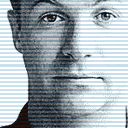In the final part of a series, Julian Borger examines the inequality of the Bush era
5 November 2003, Julian Borger, The Guardian
Nearly half the benefits of Mr Bush's $1.35 trillion tax cut in 2001 went to the richest 1%, while 60% of this year's cuts will go to taxpayers with incomes of more than $100,000, according to the tax policy centre run by the Urban Institute and the Brookings Institution in Washington. Mr Bush also fought hard to repeal an inheritance tax that affected only the wealthiest 2%, as well as cutting capital gains tax and trying to abolish the tax on dividends. The Bush cabinet also stands out for its big money background. Every member is a millionaire and, the Centre for Public Integrity says, its total net worth is more than 10 times that of the Clinton cabinet. President Bush may not be the cause of America's unequal society, but the members of his administration arguably personify a new plutocracy.
In the view of Kevin Phillips, an economic historian and the author of a history of America's rich, Wealth and Democracy, you have to go back more than 100 years to find an era when big money and government were in such a tight embrace. "It's the second plutocracy after the gilded age," Mr Phillips said. "Laissez-faire is a pretence. Government power and preferment have been used by the rich, not shunned. As wealth concentration grows, especially near the crest of a drawn-out boom, so has upper-bracket control of politics and its ability to shape its own preferment."
Yet it would be hard to imagine a country less ripe for social upheaval. Mr Bush may be politically vulnerable in the approach to elections a year from now, but he remains favourite to win, and his opponents in the Democratic party try to avoid the language of class warfare at all costs. The "liberal" label can still spell death at the polls. For outsiders, the absence of class-based politics is the enduring mystery of American society. Among US analysts it is a matter of ideological disagreement.
David Brooks, a commentator at the conservative American Enterprise Institute, believes the divide is cultural rather than economic. It is the divide between the urban, cosmopolitan and liberal culture of the coasts where there are "sun-dried tomato concoctions" on restaurant menus - what he calls Blue America - and the conservative, church-going, gun-owning, patriotic and mainly white culture of Red America. Red America eats meatloaf and votes for George Bush because it identifies with his cultural values. Its people are not envious of the top 1% of the population, Mr Brooks argues, because in Red America they never meet them. Instead, they consider themselves lucky to live in their own modest communities where prices are so low they see little they cannot afford. "I didn't find many who assessed their own place in society according to their income," he reported. "They don't compare themselves with faraway millionaires who appear on their TV screens. They compare themselves with their neighbours."
Paul Krugman, a Princeton economist and Mr Brooks' liberal counterpart on the comment pages of the New York Times, argues that this cultural divide is more manipulated than natural, and serves to mask the society's ingrained inequity. "There has been a tremendously successful campaign to shift the focus from economic elitism to cultural elitism," Mr Krugman said. "Because the president uses short words and talks tough, he is seen as an ordinary guy."
Certainly, most Americans appear to take Mr Bush at face value - as a plainspoken, homespun Texan, rather than the scion of a wealthy East Coast family. It is hard to imagine his real social background passing so unremarked in a British election campaign.
His party has also toyed with the cultural imagery of class, in one instance arranging for party loyalists to wear street clothes and workmen's hard hats at a rally for the Bush tax cuts. The memo sent out to would-be demonstrators stressed that "If people want to participate - AND WE DO NEED BODIES - they must be DRESSED DOWN, appear to be REAL WORKER types etc." In the end, the televised rally involved the president's supporters dressed as the working poor, cheering for more money to go to the rich. It is hard to think of a more fitting tableau for Bush's America.
FULL ARTICLE...






